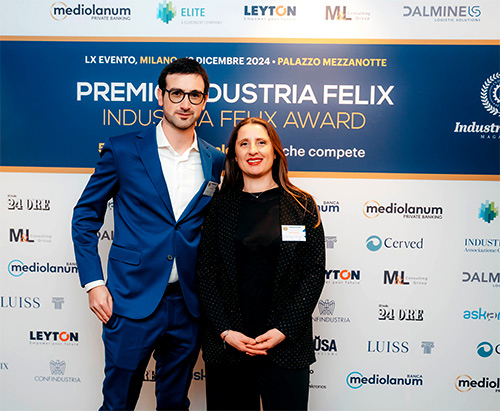University of Siena spin-off and Toscana Life Sciences (TLS)-incubated reality, Siena Imaging wins a mentoring programme worth 200,000 euro
Collected in Milan by Marco Battaglini, researcher at the University of Siena and today CEO and co-founder of Siena Imaging, the Roche HealthBuilders prize, Roche Italia’s first Open Innovation programme dedicated to health. The Siena-based start-up won first prize with the SI.Nlab project, an accurate and simple tool aimed at improving patient monitoring through a new way of analysing MRI images of the brain and designed to be made available to neurologists and neuroradiologists.
important step for our team towards the realisation of a dream. SI.Nlab is the fruit of 15 years of research and we would like it to be the forerunner of a new way of working for many neurologists and neuroradiologists who daily face important choices in terms of diagnosis, treatment and taking care of patients suffering from complex and delicate pathologies in their management such as brain tumours, multiple sclerosis and Alzheimer’s’.
It is a virtual platform for analysing magnetic resonance imaging (MRI) data of the brain based on tested algorithms and visualisers designed to accurately and quickly obtain biomarkers of interest.
‘On this occasion,’ says Nicola De Stefano, co-founder of Siena Imaging and Professor of Neurology at the Department of Medical, Surgical and Neuroscience Sciences at the University of Siena, ‘I would like to recall the importance of the research activity carried out over the years, the results of which have helped to build a strong scientific credibility, which is now the main guarantee of reliability for our business partners.
SI.Nlab will change the way brain damage is identified, assessed, interpreted and monitored by reducing the time compared to current practice and increasing the degree of accuracy.
‘If we consider that around 5 million MRI images are produced in Europe every year, costing more than one billion euros, and that the examination is essentially carried out through visual inspection,’ Marco Battaglini points out, ‘we can understand the potential impact of a new methodology that would make it possible to exploit all the information contained in an MRI scan and make it available to the doctor and, ultimately, to the patient.
A software that, unlike the few competitors on the market, involves the specialist in the quantification of new biomarkers, supporting him, with an easy-to-use tool, in an activity otherwise too complex and time-consuming to be fully implemented in clinical practice.


